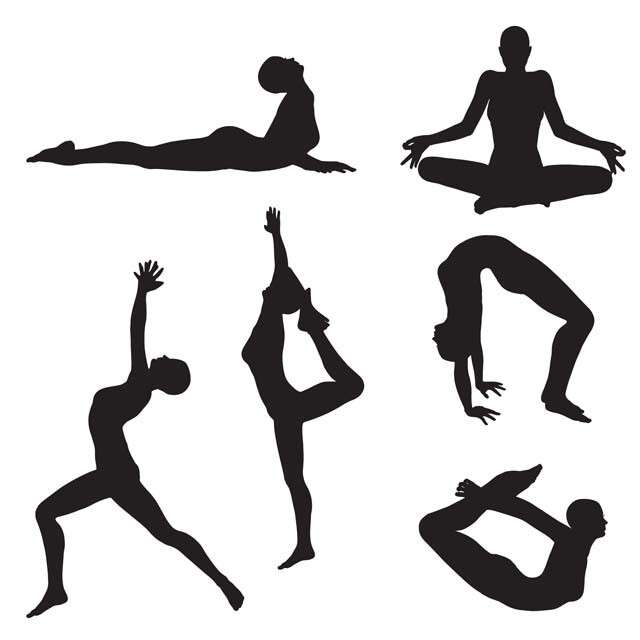
An asana is a body posture that is performed to benefit the health and mind. The term has been derived from a Sanskrit term that means “posture” or “pose”. While the gym is a new concept but performing different types of yoga asanas is an age-old concept. While often people feel that asanas do not involve intense cardio and weights, studies prove that asanas can help one in losing weight, stabilise period cramps, shoots up the health of the heart and digestion. Asanas can even be performed at home without any instruments.
Benefits Of Asanas
Sukhasana Or Easy Pose
Naukasana Or Boat Pose
Dhanurasana Or Bow Pose
Vakrasana Or Twisted Pose
Kakasana Or Crow Pose
Bhujangasana Or Cobra Stretch
Halasana Or Plough Pose
Sarvangasana Or Shoulder Stand
Shirsasana Or Headstand
Gomukhasana or Cow Face Pose
Different Types of Asanas FAQs
Benefits Of Asanas
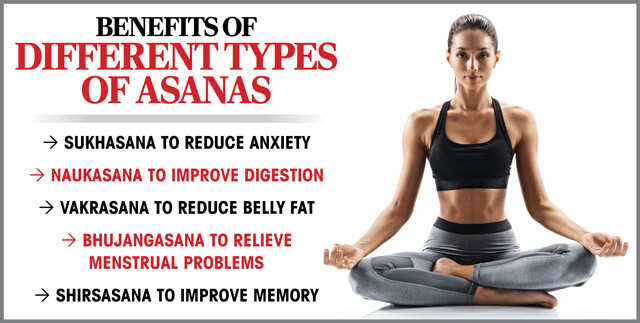
Asanas essentially work to lubricate the muscles, joints, ligaments and other parts of the body. This helps to increase circulation and flexibility. They also help better the internal body health as different asanas work on different internal parts of the body. So if you have any health condition, you can look for a relevant asana to practice to help take care of the ailment.
Sometimes, people feel lethargic and drained without having any underlying medical condition. Practising daily asanas can boost up energy and also improve health. While absorbed in your daily busy schedule, asanas can help to retain the mind-body balance. Only 10 minutes of doing asanas can benefit your health. We list some of the asanas that can be beneficial for your health.
Sukhasana Or Easy Pose
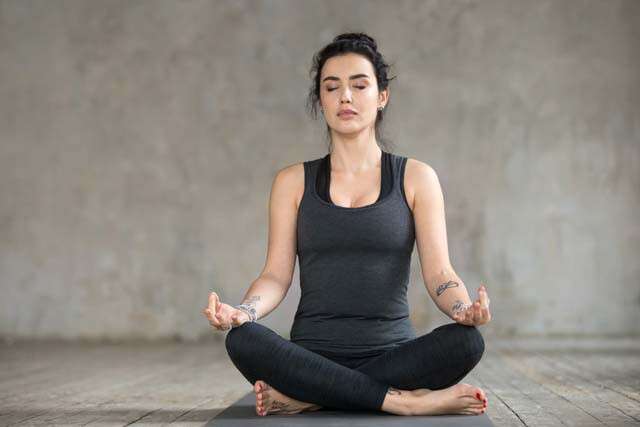
Image: Shutterstock
This is an amazing one for beginners as it gives one the desired comfort. The asana is beyond the horizons of the physical dimension and gives a spiritual bliss. Sukhasana is best to reduce anxiety and stress and mental tiredness. It corrects the body posture and stretches the chest and spine.
Tip: Sit with the legs tucked inside the opposite thighs and the spine should be vertically straight. The hands should be placed on the knees and breathe in and out gently.
Naukasana Or Boat Pose
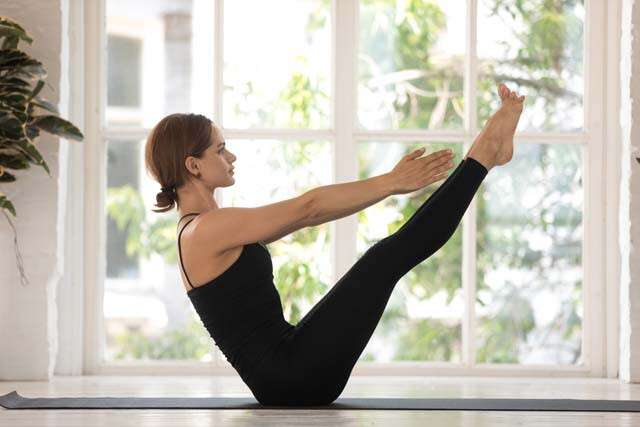
Image: Shutterstock
This is one of the easy asanas. This asana stretches the abdominal muscles and it improves digestion and reduces belly fat. It is good to improve the efficiency of abdominal muscles.
Tip: One needs to lie on one’s back with legs together and the hands-on the thighs, without touching them. Then the body should make a 30-degree angle.
Dhanurasana Or Bow Pose
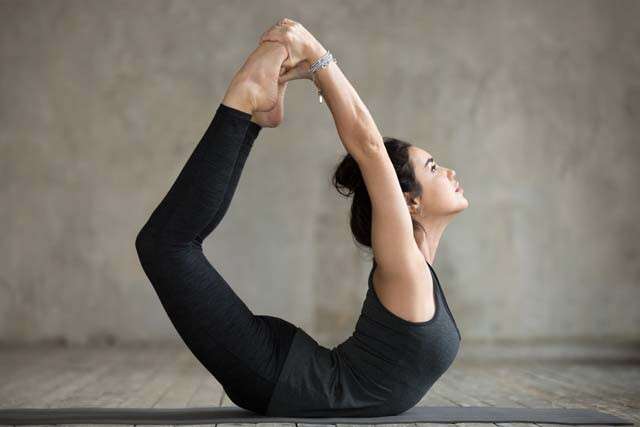
Image: Shutterstock
It stretches the entire body. It helps in weight loss and boosts digestion and blood circulation. It is effective in making the back flexible.
Tip: One just needs to lie on the stomach with hands on the feet and pull backwards. The body should make a bow-like posture as the name suggests.
Vakrasana Or Twisted Pose
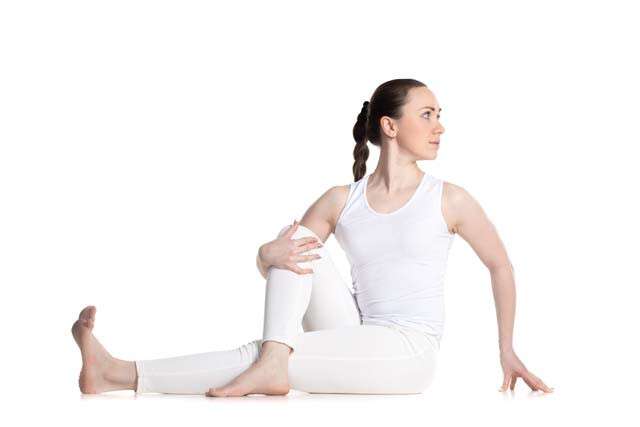
Image: Shutterstock
Vakrasana makes the body flexible and reduces belly fat and also helps in improving digestion by regulating digestive juices.
Tip: One needs to make a posture like a steady stance by placing the right foot high up on the left thigh and the hands should be over the head with the palms together. The spine must be straight and the sole of the foot flat and firm. After releasing the pose, one needs to change the position and try the other leg.
Kakasana Or Crow Pose
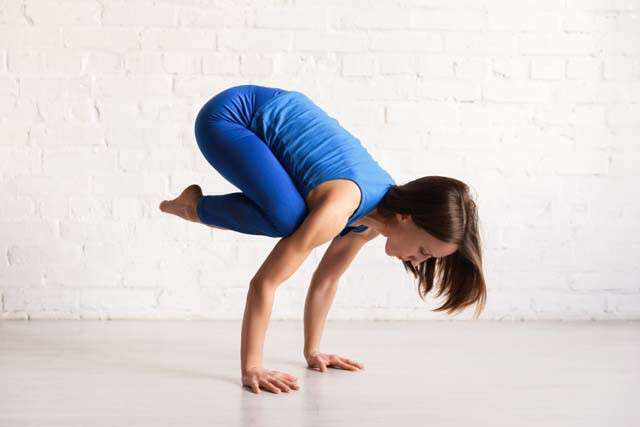
Image: Shutterstock
For anyone who wants to improve their concentration power, wipe out sluggishness and enhance mental and physical balance, kakasana is the best option, as it stretches the muscles of arms, wrists, and forearms. The posture makes the body and mind feel light. It brings together the scattered mind. It is difficult to perform and takes a lot of practices.
Tip: One needs to squat and keep the legs slightly apart with the hands firmly on the floor. After that, the body should be uplifted and the hands on the floor.
Bhujangasana Or Cobra Stretch
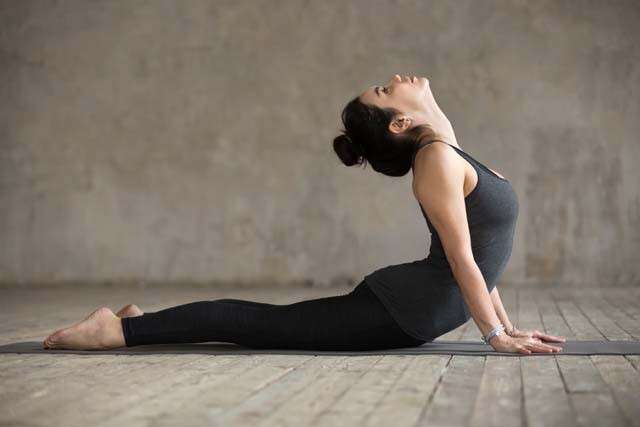
Image: Shutterstock
It is known as the corrector of the curvature and makes the spine flexible. The curve structure of the asana massages the deep back muscles, spine and nerves. It can be a great asana for people dealing with arthritis of the lower back and lower back pains. It relieves menstrual problems by stretching the uterus and ovaries. It releases stress through invigorating adrenal glands and kidneys.
Tip: After lying on the floor on the stomach, the hands should be on the floor after the upper body should be stretched and uplifted.
Halasana Or Plough Pose
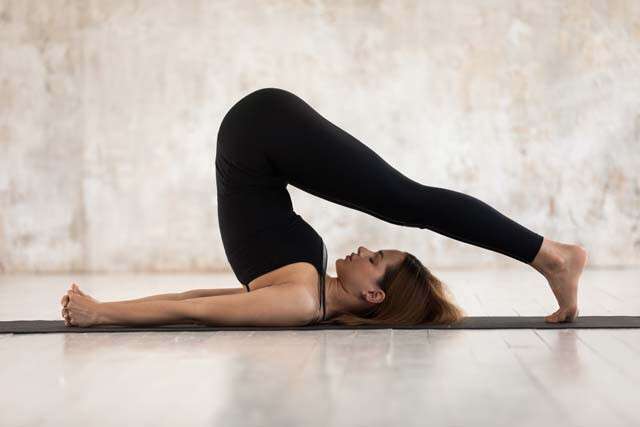
Image: Shutterstock
The halasana opens up the spinal disc and aims to keep the spinal system youthful as it stretches the spinal muscles. The stretch releases the tension from the shoulders, arms and spine. It is one of the best asanas to tackle obesity. By revitalising the internal organs, it can cure indigestion and constipation and neck arthritis stiffness.
Tip: Begin with lying on your back with the hands-on each side should be straight and stretched. Then lift both legs and place the feet over the head making a 180-degree angle.
Sarvangasana Or Shoulder Stand
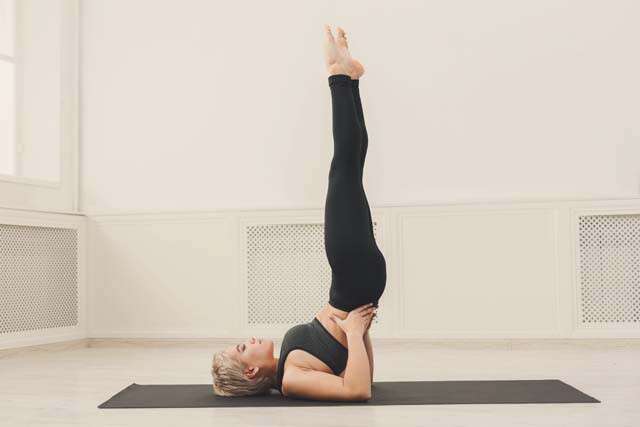
Image: Shutterstock
The meaning of Sarvangasana is “all parts”. The asana involves the entire body and revitalises it. It involves the thyroid gland and stimulates metabolism, protein synthesis, and blood circulation. The posture of the asana strengthens muscles and lowers the chances of kidney and bone disease. It aims to reduce insomnia, depression and mental anxiety.
Tip: As the name suggests, one needs to stand on the shoulder.
Shirsasana Or Headstand

Image: Shutterstock
Shirsasana aka “the king of the asanas” is one of the most difficult asanas but has remarkable benefits. It improves blood circulation, gives strength to the respiratory system, improves concentration and memory. The asana involves the brain, spine and entire nervous system and stimulates the pituitary and pineal glands. The upside-down pose helps to ease constipation and relieves nervous disorders and anxiety.
Tip: Take the support of a wall, to begin with. Keep the spine straight with your head down and feet up. Use your hands to support yourself.
Gomukhasana or Cow Face Pose
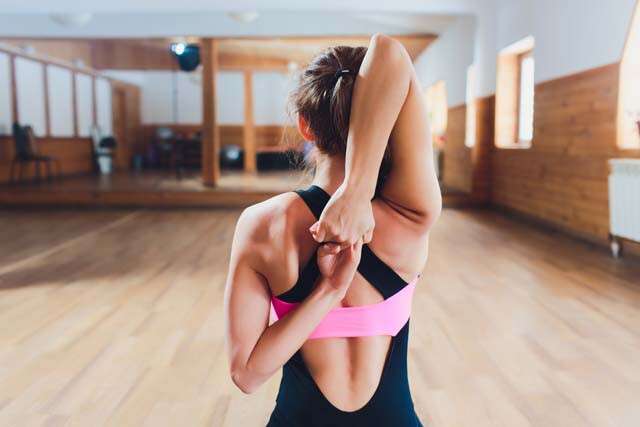
Image: Shutterstock
It is one of the basic asanas that opens up the hips. As the asana stretches the hips, arms, thighs and back, it helps in muscle relaxation.
Tip: One needs to slide the knees together then the right leg should be over the left leg with the right foot going under the left buttock.
Different Types of Asanas FAQs
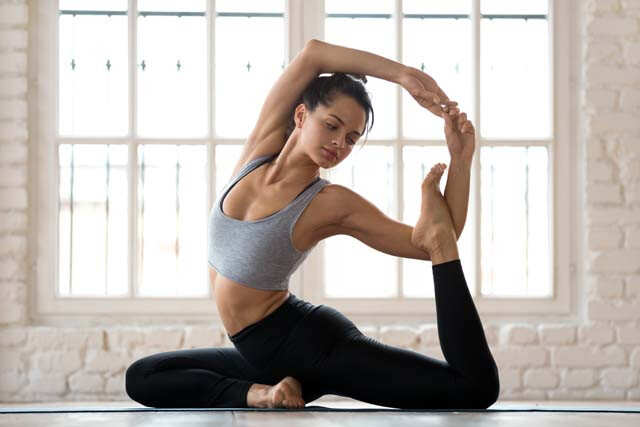
Image: Shutterstock
Q. How long to hold an asana?
A. While there is no defined time allotted, it is usually done for the time span of one to two breaths to around five minutes. It depends on the type of yoga practice and its focus.
Q. Are there any side effects of any asana?
A. If done right, then there are no side effects. It’s best to do them under expert supervision until you perfect them.
Q. Is there an age limit for doing asanas?
A. There is no age limit.
Q. When is the best time to do asanas?
A. Ideally, they should be done early in the morning on an empty stomach.
Q. Is there a certain breathing technique to do with a different type of asanas?
A. Every asana has its own breathing techniques and moments of inhalation and exhalation. Ensure you breathe right when doing the asanas will have you get the proper benefits of it. Deep abdominal, diaphragmatic breathing is the key. Consult with an expert for the best methods.
Q. Are there any pre-or post-asana warmups?
A. Before going for any complicated yoga asanas, it's best to do warmup stretches. Do stretches of all joints – neck, shoulder, elbow, wrist, waist, hips, knees, ankles, fingers and toes. After doing yoga asanas, its best to do the stretches again to relax. You can also do Shavasana ie sleep pose post your yoga workout.